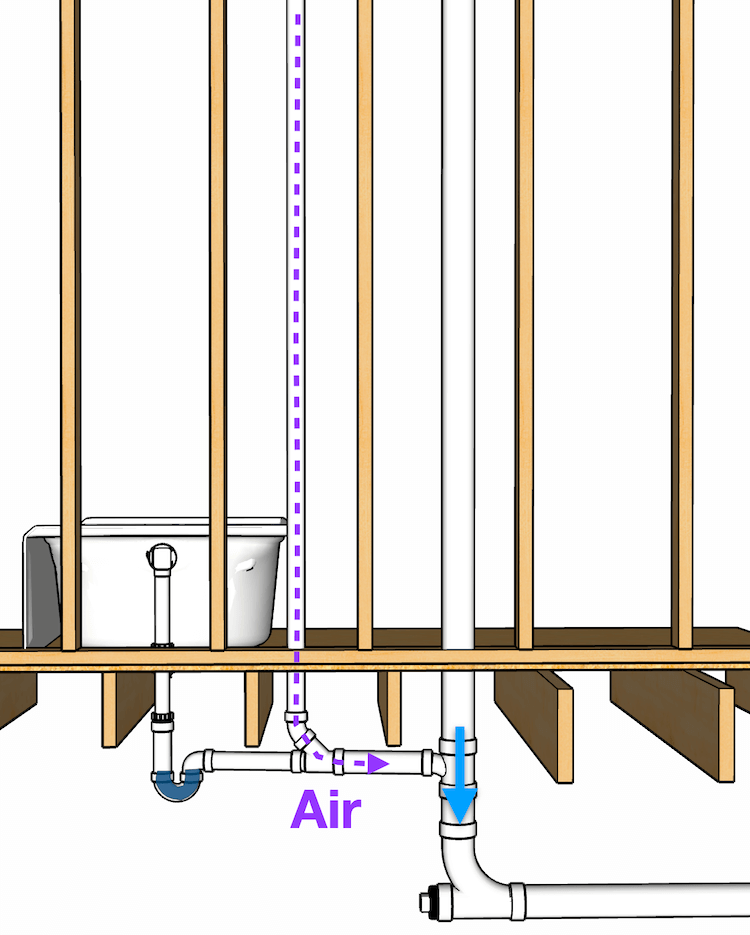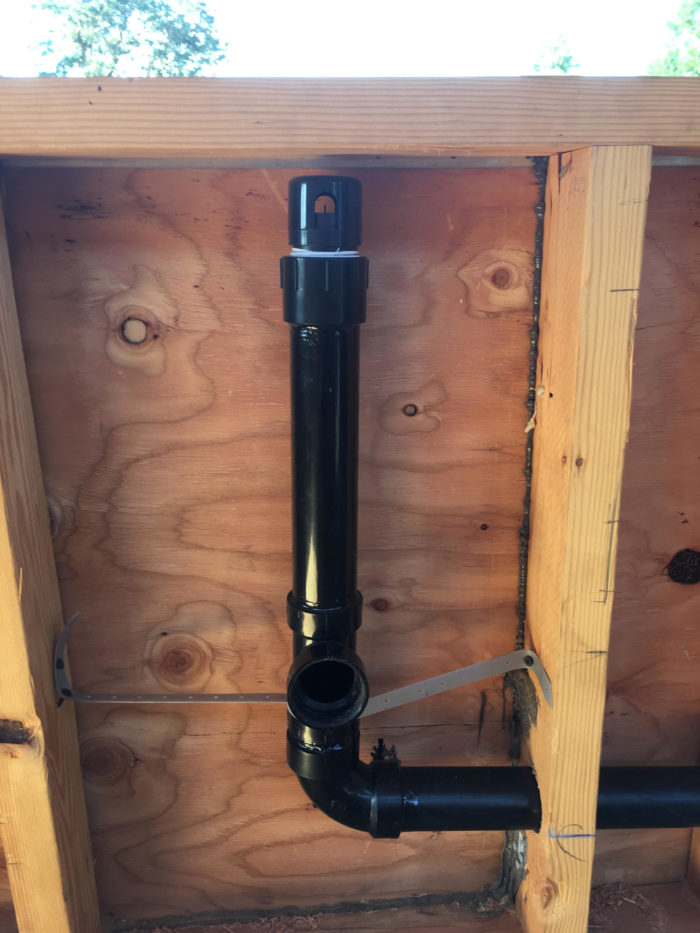The Reasons Why Adequate Ventilation is Crucial for Plumbing Systems
The Reasons Why Adequate Ventilation is Crucial for Plumbing Systems
Blog Article
What're your ideas about Why Plumbing Air Vents Are Important?

Correct ventilation in plumbing systems is usually overlooked, yet it is important for preserving the performance and safety and security of your home's pipes. Air flow helps manage air pressure, protect against the accumulation of damaging gases, and make sure the efficient removal of waste. In this overview, we will certainly explore the importance of correct pipes ventilation, just how it functions, and the advantages it offers your pipes system.
Exactly How Ventilation Works in Pipes Equipments
Atmospheric Pressure Policy
Proper air flow preserves balanced atmospheric pressure within the plumbing system. When water streams via pipelines, it displaces air. Without sufficient air flow, this displacement can develop negative stress, causing slow drains pipes or siphoning of water from traps, which can cause undesirable odors to permeate into the home.
Protecting Against Drain Gas Accumulation
One of the most important features of plumbing vents is to avoid drain gases, such as methane and hydrogen sulfide, from collecting within the home. These gases can posture serious wellness risks and are highly combustible. Vent pipes enable these gases to leave safely outside.
Assisting in Waste Removal
Air flow aids in the reliable elimination of wastewater by preventing airlocks in the drainage system. When air can flow easily through the vents, it permits water and waste to stream smoothly with the pipes, reducing the danger of clogs and back-ups.
Advantages of Proper Air Flow
Enhanced System Effectiveness
Correctly aerated pipes systems run a lot more successfully, with fewer clogs, faster draining, and much less strain on the pipelines. This performance expands the lifespan of the plumbing system.
Improved Air Top Quality
By avoiding drain gases from entering your home, appropriate air flow adds to far better interior air top quality, making your living environment healthier and more comfortable.
Preventing Water Damage
Adequate air flow aids protect against water from being siphoned out of catches, which can cause drain gases going into the home and causing water damages with time.
Actions to Make Sure Proper Air Flow
Consulting Pipes Codes
Always speak with local pipes codes when developing or customizing your plumbing system. These codes give the essential guidelines for correct venting and guarantee your system satisfies safety standards.
Routine Inspection and Upkeep
Regular inspections can aid identify possible ventilation concerns prior to they become major troubles. Upkeep tasks, such as cleaning up air vent pipelines and looking for clogs, are necessary for maintaining the system in good working order.
Professional Installation
For new setups or major adjustments, it's smart to employ a specialist plumber. They have the knowledge to make sure the ventilation system is correctly designed and mounted according to code.
Recognizing Air Flow in Pipes
Air flow in pipes refers to the network of pipelines that permit air to stream via the drainage system. These vents offer multiple functions, consisting of regulating atmospheric pressure within the pipelines, preventing sewer gases from going into the home, and assisting in the smooth flow of wastewater.
Types of Pipes Vents
Key Stack Vent
The major stack vent, additionally known as the air vent pile, is the primary vent in a pipes system. It extends from the main drainpipe align through the roofing, allowing gases to leave and fresh air to go into the system.
Branch Vent
Branch vents attach to the major pile air vent and offer individual fixtures, such as sinks, bathrooms, and showers. These vents make sure that each fixture has adequate air flow to work effectively.
Air Admission Valve (AAV).
An Air Admittance Shutoff (AAV) is a one-way shutoff that permits air to get in the plumbing system without the need for a traditional vent pipeline prolonging through the roofing system. AAVs are generally utilized in restorations or locations where mounting a typical air vent is unwise.
Signs of Poor Air Flow in Pipes.
Slow Draining Fixtures.
If your sinks, tubs, or toilets are draining slowly, maybe a sign of poor ventilation. Inadequate air flow can create a vacuum effect, making it difficult for water to drain pipes appropriately.
Gurgling Seems.
Gurgling noises originating from drains pipes are commonly an outcome of air being sucked through water catches as a result of negative pressure in the pipelines. This is a clear indication of inadequate air flow.
Undesirable Smells.
Sewer smells inside your home are a warning that your pipes system is not properly aerated. This can indicate that drain gases are not being appropriately aired vent outside, resulting in possibly hazardous problems.
Typical Ventilation Blunders.
Inadequate Vent Sizing.
Making use of small vent pipelines can lead to inadequate air flow and stress imbalances in the system. It's essential to utilize vents that fulfill the particular needs of your pipes system.
Improper Vent Placement.
Putting vents too far from the components they serve can decrease their performance. Proper placement ensures that air can stream openly and efficiently through the system.
Ignoring Code Needs.
Building codes offer certain standards for pipes ventilation. Disregarding these codes can lead to a system that falls short to operate correctly and might cause expensive repair services or carcinogen.
Verdict.
Appropriate ventilation is an important component of any pipes system, ensuring that it operates effectively and securely. By recognizing the relevance of air flow, acknowledging the signs of poor air flow, and taking steps to maintain your system, you can prevent pricey problems and safeguard your home's air top quality.
4 Things You Should Know About Your Plumbing Vents
What Plumbing Vents Are
Also called a vent stack, a plumbing vent is a vertical pipe attached to your drain line that runs through your roof. The plumbing vent pipe, or plumbing air vent, removes gas and odors from your plumbing system and allows fresh air to enter the pipes, helping the water to flow out of the drain pipes.
What Plumbing Vents Do
Plumbing vents have two basic functions. One of which is to allow unpleasant smelling wastewater and sewer gasses to escape your plumbing system instead of entering your home. Plumbing vent pipes are typically located on roofs, away from windows, to ensure the fumes exit the home completely.
The other function of the plumbing vent is to move fresh air into your plumbing system. This helps move water through every plumbing fixture in your house, like toilets and sink drains. Think of the way in which you need to let a little air into the bottle as you pour soda in order to make the drink flow smoothly.
Different Types of Plumbing Vents
True vent: This is the most common vent option. In simplest terms, a true vent is a vertical pipe attached to your drain line that exits through the roof. They often function as the main vent that other fixtures can connect to. Re-vent pipe or auxiliary vent: Attached to the drain line near specific plumbing fixtures, re-vent pipes run up and over to connect to the main vent. Common vent: Two plumbing fixtures installed on opposite sides of a wall are typically tied into the vent stack using something known as a sanitary cross. Wet vent: This venting option operates as a drain pipe and a vent at the same time. Wet vent drainage systems drain water from one fixture while venting the air from another. Although they’ve been used for over 100 years, wet vent systems have only recently been added to the plumbing code in many areas. If you’re planning on installing one in a bathroom remodel, make sure you check your local code prior to construction. Loop vent: For free-standing fixtures like kitchen island sinks, loop vents are ideal. These vent pipes run under the floor, rise from the P-trap, and create a loop inside the cabinet sink. Air admittance valve: An AAV is a one-way mechanical valve typically installed at the site of the plumbing fixture. AAVs allow venting to occur without having to tie into a larger venting system. They’re ideal for venting fixtures where you aren’t able to easily connect to an existing vent system. Common Plumbing Vent Issues
Although vent pipes typically don’t have water flowing through them, they’re still subject to many typical plumbing issues. For example, clogs are one of the most common problems associated with sewer vent pipes. If your vent pipe gets clogged, all of your plumbing fixtures tied into the vent stack will be affected.
A sink with a slow drain that bubbles and gurgles or a strong sewage smell around your toilet are both indicators that your toilet vent pipe is clogged. Because most vent pipes exit through the roof, old leaves, twigs or even a bird’s nest could be clogging the pipe.
Clogs in your vent pipe system cause a buildup of negative pressure, meaning that water won’t be able to flow out of your home very well. It’s similar to putting your finger over the opening of a straw to trap water inside. When you remove your finger, the water is able to flow out of the straw.
If you suspect you have any blockage in your vent, make sure you have a professional come examine the situation. Left unchecked, a blocked air vent can lead to other costly repairs, like leaks and sediment buildup.
Under Pressure
Pipe vents are essential aspects of a home’s plumbing system. Owning a home means learning about all sorts of things you never put much thought into before. But by understanding as much as you can about the important systems of your home, you can keep those budgets intact and those anxiety levels low.
https://www.homeserve.com/en-us/blog/home-improvement/plumbing-vents/

I found that piece on Essential Plumbing Vent Pipes: Understanding Their Role when doing a lookup on the internet. Liked our blog entry? Please quickly share it. Let others check it out. Kudos for being here. Please check up our website back soon.
Call Today Report this page